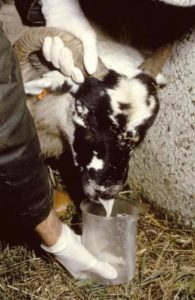OPA: Did You Know?
20 August 2016
- OPA is an infectious lung tumour of sheep that is caused by a virus.
- During the last 2 years SAC diagnostic laboratories have diagnosed cases of OPA in sheep from 98 different farms – this equates to almost 1 new farm a week.
- The disease is present in all areas with diagnoses being made from Dumfries to Thurso.
- OPA is diagnosed in all months of the year peaking between January and March.
- It is most often diagnosed in Scottish Blackfaces and Mules but has also been recorded in 27 other breeds and crosses including Texel, Suffolk, BFL, Lleyn, Beltex, Cheviot, Soay, Jacob, Charolais, Shetland, Rouge, Highlander, Zwartbles and Swaledale.
- Diagnoses in ewes peak at 4 years of age. The equivalent figure for tups is 2 years of age. OPA has been diagnosed in both ewe and tup lambs less than one year of age.
- Approximately 15% of the diagnoses were made in tups. Investigation was often prompted by the death of a tup within 6 months of purchase.
- “Found dead” is the main farmer complaint in almost 50% of cases submitted for investigation. The remainder have a history of ill thrift and/or respiratory disease.
- Secondary bacterial pneumonia (almost always due to Mannheimia haemolytica) is a common finding.
- Concurrent infection with Maedi Visna has been found in a small number of flocks.
There is no likelihood of an accurate, affordable blood test for OPA becoming available any time soon. Buying from trusted sources and investigating any problems that could be due to OPA are key measures to take. Livestock Health Scotland are promoting ultrasound scanning of sheep lungs as a screen for purchased animals and research is ongoing into whether scan and cull programmes are a viable option for the control of this disease. Scanning courses to train vets have been held at the Moredun Research Institute in collaboration with Phil Scott. It should be noted that a negative scan result does not prove freedom from OPA as early lesions can be too small to detect.
Heather Stevenson, heather.stevenson@sac.co.uk
Sign up to the FAS newsletter
Receive updates on news, events and publications from Scotland’s Farm Advisory Service

